Metrix TX 01 Handleiding
Metrix
Niet gecategoriseerd
TX 01
Bekijk gratis de handleiding van Metrix TX 01 (3 pagina’s), behorend tot de categorie Niet gecategoriseerd. Deze gids werd als nuttig beoordeeld door 66 mensen en kreeg gemiddeld 3.9 sterren uit 33.5 reviews. Heb je een vraag over Metrix TX 01 of wil je andere gebruikers van dit product iets vragen? Stel een vraag
Pagina 1/3

Mode d’Emploi
User’s Manual
Bedienungsanleitung
Libretto d’Istruzioni
Manual de Instrucciones
Vous venez d’acquérir un TESTEUR DE TEN-
SION et nous vous remercions de votre confiance.
Pour obtenir le meilleur service de votre appareil :
■ attentivement ce mode d’emploilisez
■ les précautions d’emploirespectez
POUR COMMANDER
■ Testeur de tension TX01 TX 0001-Z.................
Livré avec une pile 9 V et ce mode d’emploi
■ Accessoires
- Sacoche n°10 ...........................P01298012
- Dragonne .................................P03100824
■ Rechange
- Pointe de touche rouge...............P01103061Z
Significations du symbole
Attention ! Consulter le mode d’emploi avant
d’utiliser l’appareil.
Dans le présent mode d’emploi, les
instructions précédées de ce symbole, si elles
ne sont pas bien respectées ou réalisées,
peuvent occasionner un accident corporel
ou endommager l’appareil et les installations.
PRECAUTIONS D’EMPLOI
■ Toujours procéder à un AUTO-TEST avant
d’utiliser le testeur.
■ Tension maxi d’utilisation : 690V
■ Ne pas utiliser sur une installation dont la
tension est supérieure à 600 V par rapport à
la terre et dont la catégorie de surtension est
supérieure à III.
■ Ne jamais procéder à un test de résistance sur
un circuit sous tension. Cependant en cas de
fausse manoeuvre, protection jusqu’à 550V.
■ Ne jamais toucher les pointes de touche
métalliques pendant un test.
Signification du symbole
Cet appareil est protégé par une isolation
double ou une isolation renforcée. Il ne néces-
site pas de raccordement à la borne de terre de
protection pour assurer la sécurité électrique.
FRA NCAIS
E N G L I S H
D E U T S C H
I TA L IA NO
E S PA N O L
TX 01
■ TESTEUR DE TENSION
■ VOLTAGE TESTER
■ SPANNUNGSPRÜFER
■ TESTER DI TENSIONE
■ COMPROBADOR DE TENSION
09 - 2015
Code 692037A00 - Ed.3
ENGLISH....................................
DEUTSCH.................................
ITALIANO.............................
ESPAÑOL.................................
1 - PRÉSENTATION
Voir dessin en 10.Annexe
Le TX01 est un testeur visuel et sonore de
tension continue et alternative, de continuité
et de résistance. Il dispose également de la
fonction repérage phase/neutre. Sa tension maxi
d’utilisation, 690 V, permet les tests sur une
installation triphasée 400 V/690 V tout en respectant
la tension maxi par rapport à la terre de 600 V. Ce
testeur ne possède pas de fusible et sa conception
évite les risques de court-circuit interne.
➀ Pointe de touche (avec entraxe 19 mm)
➁
Garde anti-glissement pour éviter tout contact
accidentel avec un conducteur sous tension
➂ Rampe à LED donnant la valeur de la tension
ou de la résistance
➃ AUTO-TEST : touche de contrôle
➄ Poussoir «continuité» au dos du boîtier
SOMMAIRE
1 - PRÉSENTATION.......................................
2 - AUTO-TEST................................................
3 - TEST DE TENSION..............................
4 - REPERAGE PHASE/NEUTRE....................
5 - TEST DE CONTINUITE ET DE RESISTANCE
6 - TEST DIODE ................................................
7 - CARACTÉRISTIQUES GÉNÉRALES..........
8 - MAINTENANCE.......................................
9 - GARANTIE.................................................
10 - ANNEXE.....................................................
2 - AUTO-TEST
L’auto-test permet de contrôler le bon fonctionnement
du testeur dans son ensemble : des pointes de touche
aux diodes électroluminescentes (LED) via le cordon,
l’électronique, le buzzer et la pile 9 V.
NB : Ne jamais utiliser le testeur si l’auto-test
est négatif
Mise en oeuvre
Appuyer sur la touche AUTO-TEST.
■ La LED «+» et les LED 12 à 690 V s’allument
et le bip sonore fonctionne
■ Court-circuiter les pointes de touche, avec la
touche AUTO-TEST toujours appuyée : la
LED «-» s’allume
Le testeur est en bon état de fonctionnement si
toutes les LED s’allument. Si non, changer la pile
9V (voir 8-Maintenance) et recommencer l’autotest.
3 - TEST DE TENSION
Toujours procéder à un AUTO-TEST avant
d’utiliser le testeur.
Ne pas appuyer sur le poussoir «continuité»
au dos du boîtier.
3.1 MISE EN OEUVRE
Mettre la pointe de touche rouge en place dans la
borne «+» verrouillable. Prendre le testeur en main,
sans appuyer sur la touche AUTO-TEST et placer les
pointes de touche aux bornes du circuit à contrôler.
La simple présence d’une tension assure le
fonctionnement automatique.
3.2 RECONNAISSANCE DU CONTINU OU DE
L’ALTERNATIF
■ Les deux LED vertes «+» et «-» s’allument :
tension alternative
■ La LED «+» s’allume : continu, le positif à la
pointe de touche du boîtier
■ La LED «-» s’allume : continu, le négatif à la
pointe de touche du boîtier
■ Aucune LED ne s’allume : pas de tension ou
tension < 12 V.
3.3 VALEUR DE LA TENSION
■ 2 LED vertes : 12 V et 24 V
■
5 LED rouges : 50 V, 127 V, 230 V, 400 V et 690 V
La dernière LED allumée donne le niveau de
tension en présence. Allumage à 85 % de la
tension nominale
: Emission d’un signal sonore continu
simultanément avec l’allumage des
LED rouges (U > 50 V)
En cas d’ensoleillement intense, la
perception visuelle de présence de
tension peut-être affectée.
3.4 CARACTÉRISTIQUES ET DOMAINE
D’UTILISATION
■ Détection de tension : 12 V U ≤ ≤ 690 V
■ Fréquence : 0...400 Hz
■ Tension maxi par rapport à la terre : 600 V
■ Surcharge admissible : 1000 V eff. pendant
30s.
■ Consommation : variable suivant la tension.
125 µA à 50 V et 1,7 mA à 690 V
■ Impédance : 400 kΩ
■ Temps de réponse : < 0,5 seconde
■ Durée de test : illimité pour U 690 V eff.≤
4 - REPÉRAGE DE PHASE / NEUTRE
Toujours procéder à un AUTO-TEST avant
d’utiliser le testeur
Amener la pointe de touche noire au contact du
circuit à tester. En présence de phase (
U > 100 V
) la
LED «Ph» clignote. Dans certains cas la LED «Ph»
peut s’allumer en présence de charges statiques.
5 - TEST DE CONTINUITE ET
DE RESISTANCE
Toujours procèder à un auto-test avant
d’utiliser le testeur. Ne jamais procèder à un test de
résistance sur un circuit sous tension.
5.1 MISE EN OEUVRE
Placer les pointes de touche aux bornes du
composant ou du circuit à contrôler. Appuyer sur
le poussoir «continuité» au dos du boîtier.
5.2 VALEUR DE RESISTANCE
■ 2 LED vertes : 300 kΩ et 60 kΩ (à 25 % près)
■ 1 LED rouge : 2 kΩ
La dernière LED allumée donne l’évaluation
de la résistance en présence; valeur inférieure
à celle marquée sur le testeur.
5.3 TEST SONORE DE CONTINUITE
Il y a émission d’un signal sonore continu
simultanément à l’allumage de la LED rouge
« » : R 2 k≤ Ω
5.4 CARACTÉRISTIQUES
■ Impédance : 12 kΩ
■ Courant de test maxi : 100 µA
■ Tension de test à vide : 3,8 V
■
Polarité positive sur la pointe de touche du boîtier
■ Temps de réponse : < 0,5 seconde
■ Protection : jusqu’à 550 V
(consommation < 20 mA pour 230 V.
Ne fait pas disjoncter les différentiels 10 et 30 mA)
6 - TEST DIODE
La mise en oeuvre du test diode est identique à
celle du test de continuité; pour vérifier le sens de
conduction (ou inverse) des diodes, transistors, ...
7 - CARACTERISTIQUES GENERALES
7.1 CONDITIONS D’ENVIRONNEMENT
Conditions à respecter pour garantir le bon
fonctionnement
■ Utilisation en intérieur
■ Température : -10 ... +55°C
■ Humidité relative : 10 ... 90 % HR
■ Altitude : jusqu’à 2000 m
7.2 ALIMENTATION
■ 1 pile 9 V (6 F 22, 6 LF 22 ou NEDA 1604)
■ Autonomie :
- 5000 tests de 5 secondes avec pile alcaline
(6 LF 22)
- 3500 tests de 5 secondes avec pile ordinaire
7.3 DIMENSIONS ET MASSE
■ Dimensions : 193 x 47 x 36 mm (hors tout)
Masse : 170 g (avec pile)
■ Longueur du cordon : 1,20 m
■
Diamètre des pointes de touche : 2mm et 3,7 mm
7.4 CONFORMITÉ AUX NORMES
■ DIN-VDE 0680 - Partie 5 : norme allemande
définissant les testeurs bipolaires de tensions.
■ Sécurité électrique
(selon IEC 61010-1, IEC 61010-2-033)
- Double isolation
- Catégorie d’installation III
- Degré de pollution 2
-
Tension assignée : 600 V (par rapport à la
terre)
■ Etanchéité (selon NF EN 60529) :
Indice de protection IP 50
■ Compatibilité électromagnétique :
Émission et immunité en milieu industriel selon
EN 61326-1
8 - MAINTENANCE
Pour la maintenance, utilisez seulement
les pièces de rechange qui ont été
spécifiées. Le fabricant ne pourra être tenu pour
responsable de tout accident survenu suite
à une réparation effectuée en dehors de son
service après-vente ou des réparateurs agréés.
8.1 REMPLACEMENT DE LA PILE
Toujours déconnecter le testeur de toute
source électrique avant d’ouvrir le boîtier.
■
Démonter les deux vis du demi-boîtier inférieur.
■ Remplacer la pile 9 V défectueuse par une pile
de même type (6 F 22, 6 LF 22 ou NEDA 1604)
et refermer le boîtier avant utilisation.
8.2 ENTRETIEN
■ Nettoyage du boîtier avec un chiffon légèrement
imbibé d'eau savonneuse. Rincer avec un
chiffon humide. Ensuite sécher rapidement
avec un chiffon ou de l'air pulsé.
8.3 STOCKAGE
Si le testeur n’est pas mis en service pendant
une durée dépassant 60 jours, enlevez la pile et
stockez la séparément.
8.4 RÉPARATION
Pour les réparations sous garantie et hors garantie,
contactez votre agence commerciale Chauvin
Arnoux la plus proche ou votre centre technique
régional Manumesure qui établira un dossier
de retour et vous communiquera la procédure
à suivre.
Coordonnées disponibles sur notre site :
http://www.chauvin-arnoux.com
ou par téléphone aux numéros suivants :
02 31 64 51 55 (centre technique Manumesure),
01 44 85 44 85 (Chauvin Arnoux).
Pour les réparations hors de France métropolitaine,
sous garantie et hors garantie, retournez l'appareil
à votre agence Chauvin Arnoux locale ou à votre
distributeur.
9 - GARANTIE
Notre garantie s’exerce, sauf stipulation
expresse, pendant douze mois après la
date de mise à disposition du matériel
(extrait de nos Conditions Générales de
Ve n te , com m un iq u ée s sur dem a nde ).
Meaning of the symbol
Warning ! Please refer to the User’s Manual
before using the instrument.
In this User’s Manual, the instructions preceded
by the above symbol, should they not be carried
out as shown, can result in a physical accident
or damage the instrument and the installations.
SAFETY PRECAUTIONS
■ Always make an AUTO-TEST before using
the tester.
■ Maximum operating voltage: 690 V.
■ Do not use on an installation in which the
voltage is greater than 600 V in relation to the
earth, and which has an overvoltage category
greater than III.
■ Never make a resistance test on a live circuit.
However, in case of incorrect operation,
protection up to 550 V.
■
Never touch the metallic test prods during a test.
TO ORDER
■ Tester TX01....................................TX0001-Z
Supplied with a 9 V battery and this User’s manual
■ Accessories
- Holster n°10 ................................P01298012
- Wrist strap ...................................P03100824
■ Spare
- Red test prod .............................P01103061Z
Thank you for purchasing a VOLTAGE TESTER.
To get the best service from this instrument:
■ this user’s manual carefullyread
■ the safety precautions detailedrespect
English
Meaning of the symbol
This device is protected by a double insulation
or by a reinforced insulation. No linking is
required from the protection earth terminal to
ensure the electrical security.
SUMMARY
1 - PRESENTATION .........................................
2 - AUTO-TEST ................................................
3 - VOLTAGE TEST .........................................
4 - PHASE/NEUTRAL IDENTIFICATION ..........
5 - CONTINUITY AND RESISTANCE TEST .......
6 - DIODE TEST ..............................................
7 - GENERAL SPECIFICATIONS ....................
8 - MAINTENANCE ..........................................
9 - WARRANTY ...............................................
10 - APPENDIX ..................................................
1 - PRESENTATION
See drawing 10.Appendix
The TX01 is an audible and visual DC and AC voltage,
continuity and resistance tester. It also has a phase/
neutral identification function. Its maximum operating
voltage, 690 V, allows tests on a 3-phase 400 V/ 690 V
installation whilst respecting the max voltage in relation
to the earth of 600 V.
This tester does not have a fuse and its design
avoids risks of internal short circuit.
➀ Test prods (with 19 mm gap)
➁ Non-slip guard to avoid any accidental contact
with a live conductor
➂ Ramp of LED’s giving the value of the voltage
➃ AUTO-TEST: test button
➄ Continuity button on the back of the case
2 - AUTO-TEST
The auto-test allows testing of the correct operation
of the complete tester: test prods with light emitting
diodes (LED), via the lead, the electronics and the
9 V battery.
NB: Never use the tester if the auto-test is negative.
How to do the auto-test
Press the AUTO-TEST button
■ The «+» LED and the 12 to 690 V LED’s light
up, and the buzzer comes on.
■ Short-circuit the test prods, with the AUTO-TEST
button still pressed: the «-» LED lights up.
The tester is in good working condition if all the
LED’s light. If not, change the 9 V battery (see §.
8. Maintenance) and do the auto-test again.
3 - VOLTAGE TEST
Always do an AUTO-TEST before using
the tester. Do not press the «continuity» button on
the back of the tester.
3.1 HOW TO USE
Place the red test prod in position in the lockable
«+» terminal. Hold the tester in your hand, without
pressing the AUTO-TEST button, and place the test
prods at the terminals of the circuit to be tested.
The simple presence of a voltage ensures
automatic operation.
3.2 RECOGNITION OF DC OR AC
■
Both green LED’s «+» and «-» light up: AC voltage
■ The «+» LED lights: DC, positive at the test
prod of the tester
■ The «-» LED lights: DC, negative at the test
prod of the tester
■ No LED lights up: no voltage or voltage < 12 V.
3.3 VALUE OF THE VOLTAGE
■ 2 green LED’s: 12 V and 24 V
■
5 red LED’s: 50 V, 127 V, 230 V, 400 V and 690 V
The last LED lit gives the level of voltage present.
Lights to 85 % of the nominal voltage.
: Emission of continuous audible buzzer
simultaneously with lighting of the red
LED’s (U > 50 V).
In case of bright sunlight, the visual
perception of the presence of voltage may
be affected.
3.4 SPECIFICATIONS AND DOMAIN OF USE
■ Voltage detection: 12 V U ≤ ≤ 690 V
■ Frequency: 0...400 Hz
■
Maximum voltage in relation to the earth: 600 V
■ Permited overload: 1000 Vrms for 30 seconds
■
Consumption: variable depending on the voltage.
125 µA at 50 V and 1.7 mA at 690 V
■ Impedance: 400 k Ω
■ Response time: < 0.5 seconds
■ Duration of test: unlimited for U ≤ 690 Vrms.
4 - PHASE / NEUTRAL IDENTIFICATION
Always perform an AUTO-TEST before
using the tester
Bring the black test prod into contact with the
circuit to be tested. In the presence of phase
(U > 100 V) the «Ph» LED flashes. In certain
cases, the «Ph» LED may light up in the presence
of static charges.
5 - CONTINUITY AND RESISTANCE TEST
Always perform an AUTO-TEST before
using the tester. Never make a resistance
test on a live circuit
5.1 HOW TO USE
Place the test prods at the terminals of the component
or the circuit to be tested. Press the «continuity» button
on the back of the tester.
5.2 VALUE OF RESISTANCE
■ 2 green LED’s: 300 k and 60 k (to nearestΩ Ω
25%)
■ 1 red LED: 2 k Ω
The last LED lit gives the value of the resistance
present; value below that marked on the tester.
5.3 CONTINUITY SOUND TEST
A continuous buzzer sounds simultaneously with
lighting of the red LED « »: R 2 k ≤ Ω
5.4 SPECIFICATIONS
■ Impedance: 12 k Ω
■ Max test current: 100 µA
■ Empty voltage test: 3.8 V
■ Positive polarity on the test prod of the tester
■ Response time: < 0.5 seconds
■
Protection: up to 550 V (consumption < 20 mA
for 230 V. Does not trigger 10 and 30 mA RCD’s)
6 - DIODE TEST
The diode test is done in exactly the same way
as the continuity test; to check the direction of
conduction (or reverse) of diodes, transistors,...
7 - GENERAL SPECIFICATIONS
7.1 ENVIRONMENTAL CONDITIONS
Conditions to respect to guarantee good
operation
■ Use indoors.
■ Temperature: -10...+55°C
■ Relative humidity: 10...90% RH
■ Altitude: up to 2000 m
7.2 POWER SUPPLY
■ 1 battery 9 V (6 F 22, 6 LF 22 or NEDA 1604)
■ Battery life:
- 5000 tests of 5 seconds with alkaline battery
(6 LF 22)
- 3500 tests of 5 seconds with ordinary battery
7.3 DIMENSIONS AND WEIGHT
■ Dimensions: 193 x 47 x 36 mm (outside)
Weight: 170 g (with battery)
■ Length of lead: 1.20 m
■ Diameter of test prods: 2 mm and 3.7 mm
7.4 CONFORMITY WITH STANDARDS
■ DIN - VDE 0680 - Part 5: German standard
defining dual pole voltage testers.
■ Electrical safety
(to IEC 61010-1, IEC 61010-2-033)
- Double insulation
- Installation category III
- Degree of pollution 2
- Rated voltage: 600 V (in relation to the earth)
■ Watertightness (to NF EN 60529):
Protection index IP 50
■ Electromagnetic compatibility
Emissions and immunity in an industrial
setting compliant with EN 61326-1
8 - MAINTENANCE
For maintenance, use only specified
spare parts. The manufacturer will not be held
responsible for any accident occurring following
a repair done other than by its After Sales Service
or approved repairers.
8.1 REPLACING THE BATTERY
Always disconnect the tester from any
electric source before opening the case
■ Remove the two screws from the lower half of
the case
■ Replace the used 9 V battery by a battery of
the same type (6 F 22, 6 LF 22 or NEDA 1604)
■ Close the case again before using the tester
8.2 CLEANING
■ Clean the case with a cloth slightly moistened
with soapy water. Wipe off with a damp cloth.
Then dry quickly with a cloth or in a hot air flow.
8.3 STORAGE
If the tester is not used for more than 60 days,
remove the battery and store it separately.
8.4 REPAIR
For all repairs before or after expiry of warranty,
please return the device to your distributor.
9 - WARRANTY
Our guarantee is applicable for twelve months
after the date on which the equipment is made
available (extract from our General Conditions of
Sale, available on request).
BESTELLANGABEN
■ Spannungsprüfer TX01......................TX0001-Z
Lieferung mit 9 V-Batterie und Bedienungsanleitung
■ Zubehör
- Tragetasche Nr. 10 .....................P01298012
- Trageschlaufe .............................P01100824
■ Ersatzteile
- Rote Tastspitze ......................P01103061Z
Deutsch
Bedeutung des Zeichens
Achtung ! Beachten Sie vor Benutzung
des Gerätes die Hinweise in der Bedienungs-
anleitung.
Falls die Anweisungen die in vorliegender
Bedienungsanleitung nach diesem Zeichen
erscheinen nicht beachtet bzw. nicht ausgeführt
werden, können körperliche Verletzungen
verursacht bzw. das Gerät und die Anlagen
beschädigt werden.
Bedeutung des Zeichens
Das Gerät ist schutzisoliert bzw. durch eine
verstärke Isolierung geschützt. Ein Anschlu an β
einem Erdleiter ist für die Gewährleistung der
elektrischen Sicherheit nicht erforderlich.
SICHERHEITSHINWEISE
■ Führen Sie vor Benutzung des Geräts stets
den Selbsttest durch.
■ Die maximal zulässige Eingangsspannung
beträgt 690 V.
■ Das Gerät niemals an Anlagen mit mehr als
600V. Spannung gegenüber Erde bzw. mit einer
Überspannungsklasse größer als III benutzen.
■ Führen Sie niemals eine Widerstandsprüfung
an einer Schaltung durch, die unter Spannung
steht. Bei Fehlbedienung ist das Gerät jedoch
bis 550 V geschützt.
■ Berühren Sie niemals die metallischen
Tastspitzen während einer Prüfung.
Wir bedanken uns bei Ihnen für den Kauf
des SPANNUNGSPRÜFERS und das damit
entgegengebrachte Ver trauen. Um die besten
Ergebnisse mit Ihrem Me gerät zu erzielen, bitten wir Sie :
■ die vorliegende Bedienungsanleitung auf-
merksam zu lesen und die darin enthaltenen
Sicherheitshinweise zu beachten
INHALTSÜBERSICHT
1 - GERÄTEVORSTELLUNG ..............................
2 - SELBSTTEST.................................................
3 - SPANNUNGSPRÜFUNG ..............................
4 - ERKENNUNG PHASE/NULLEITER ..............
5 - DURCHGANGS- UND
WIDERSTANDSPRÜFUNG ..........................
6 - DIODENTEST................................................
7 - ALLGEMEINE TECHNISCHE DATEN ..........
8 - WARTUNG....................................................
9 - GARANTIE.....................................................
10 - ANHANG........................................................
1 - GERÄTEVORSTELLUNG
Siehe Abbildung 10- Anhang
Der TX01 ist ein Spannungsprüfer für Gleich-
und Wechselstrom, sowie ein Durchgangs- und
Widerstandsprüfer mit optischer und akustischer
Anzeige. Außerdem zeigt er Phase und Nulleiter
an. Die maximal zulässige Eingangsspannung von
690 V ermöglicht auch Prüfungen an Drehstrom-
Anlagen mit 400 V/690 V unter Einhaltung der
maximalen Spannung gegenüber Erde von 600 V.
Der Prüfer besitzt keine Schmelzsicherung
und sein Aufbau verhindert zuverlässig interne
Kurzschlüsse.
➀ Isolierte Tastspitzen (mit 19 mm Abstand)
➁ Gleitschutzring, verhindert unbeabsichtigtes
Abrutschen der Hand und Berührung der Leiter
➂ LED-Rampe zur Anzeige der Spannung bzw.
des Widerstands
➃ AUTO-TEST : Selbsttest des Geräts
➄ Taste für Durchgangsprüfung auf der Rückseite
2 - SELBSTTEST
Mit dem Selbsttest können Sie sämtliche Funktionen
des Geräts prüfen: Tastspitzen, LED-Anzeige, Kabel,
Elektronik, Prüfsummer und Batterie.
Hinweis: Den Prüfer bei nicht erfolgreichem Selbsttest
niemals benutzen !
Selbsttest durchführen:
Taste AUTO-TEST drücken
■ LED “+” und die LEDs von “12” bis “690” leuchten;
außerdem ertönt der Summer.
■ Tastspitzen kurzschließen und Taste AUTO-
TEST gedrückt halten: die LED “-” muß leuchten.
Wenn alle LEDs richtig leuchten und der Summer
ertönt, ist der Prüfer in Ordnung, andernfalls die 9
V-Batterie auswechseln (siehe Kapitel 8 Wartung)
und Selbsttest erneut durchführen.
METRIX
Pôle Test et Mesure de CHAUVIN-ARNOUX
6, avenue du Pré de Challes
F - 74940 ANNECY LE VIEUX
Tél. : +33 (0)4 50 64 22 22 - Fax : +33 (0)4 50 64 22 00

3 - SPANNUNGSPRÜFUNG
Führen Sie vor Benutzung des Gerätes
stets einen Selbsttest durch.
3.1 BENUTZUNG
Setzen Sie die rote Tastspitze in die “+”-Buchse
mit Verriegelung ein. Nehmen Sie den Prüfer in die
Hand, betätigen Sie dabei die AUTO-TEST-nicht
Taste und berühren Sie mit den Tastspitzen die zu
prüfende Schaltung. Falls eine Spannung anliegt,
erfolgt eine Anzeige.
3.2 WECHSEL-/GLEICHSPANNUNGSERKENNUNG
■ Wenn beide LEDs “+” und “-” aufleuchten,
handelt es sich um eine Wechselspannung
■ Leuchtet nur die LED “+” : Gleichspannung - der
Pluspol liegt an der Tastspitze am Gehäuse.
■ Leuchtet nur die LED “-” : Gleichspannung - der
Minuspol liegt an der Tastspitze am Gehäuse.
■ Keine LED leuchtet: die anliegende Spannung
ist < 12 V oder Null.
3.3
WERT DER SPANNUNG
■ 2 grüne LEDs für 12 V bzw. 24 V
■ 5 rote LEDs für 50 - 127 - 230 - 400 und 690 V
(AC/DC). Die jeweils letzte leuchtende LED der
Rampe bezeichnet den Spannungswert. Die LED
leuchtet bei Anliegen von 85% der jeweiligen
Nennspannung.
: Bei Spannungen ab 50 V ertönt auch der
Prüfsummer bei Aufleuchten der roten LEDs.
Bei starker Sonneneinstrahlung kann die
Erkennung der Spannungsanzeige durch die
Leuchtdioden erschwert sein.
3.4 TECHNISCHE DATEN UND EINSATZBEREICH
■ Spannungserkennung im Bereich : 12 V U ≤ ≤ 690 V
■ Frequenzbereich : 0 ... 400 Hz
■ Max. Spannung gegenüber Erde : 600 V
■ Zul. Überlastung : 1000 Veff während 30 s
■ Stromverbrauch : je nach Spannungspegel:
von 125 µA bei 50 V bis 1,7 mA bei 690 V
■ Eingangsimpedanz : 400 kΩ
■ Ansprechzeit : < 0,5 s
■ Prüfdauer : unbegrenzt bei U 690 V eff≤
4 - ERKENNUNG PHASE/NULLEITER
Führen Sie vor Benutzung des Gerätes stets
einen Selbsttest durch.
Berühren Sie mit der schwarzen Tastspitze die zu
prüfende Leitung. Liegt die Phase an (U > 100 V)
blinkt die Phasenanzeige-LED “Ph”. In einigen Fällen
kann die LED "Ph" bei vorhandenen statischen
Aufladungen leuchten.
5 - DURCHGANGS - UND
WIDERSTANDSPRÜFUNG
Führen Sie vor Benutzung des Gerätes stets
einen Selbsttest durch.Führen Sie niemals
eine Widerstandsprüfung an einer Schaltung durch,
die unter Spannung steht.
5.1 BENUTZUNG
Berühren Sie mit den beiden Tastspitzen die
Anschlüsse des zu prüfenden Bauteils bzw. der
Schaltung. Anschließend drücken Sie die Taste für
Durchgangsprüfung auf der Rückseite.
5.2 WERT DES WIDERSTANDS
■ 2 grüne LEDs für 300 kΩ bzw. 60 kΩ
(Genauigkeit ca. 25%)
■ 1 rote LED für 2 kΩ. Die jeweils letzte leuchtende
LED der Rampe bezeichnet den
Widerstandswert. Der tatsächliche Wert ist
geringer als der vom Gerät angezeigte.
5.3 AKUSTISCHE DURCHGANGSPRÜFUNG
Bei Aufleuchten der roten LED (d.h. R 2,5 kΩ)
ertönt auch der Prüfsummer.
5.4 TECHNISCHE DATEN
■ Eingangsimpedanz : 12 kΩ
■ Maximaler Prüfstrom : 100 µA
■ Max. Leerlaufspannung : 3,8 V
■ Pluspol an der (roten) Tastspitze des Gehäuses
■ Ansprechzeit : < 0,5 s
■ Überlastschutz : bis 550 V (Stromaufnahme
< 20 mA bei 230 V. FI-Schutzschalter mit
10mA bzw. 30 mA werden nicht ausgelöst)
6 - DIODENTEST
Der Diodentest wird wie eine Durchgangsprüfung
vorgenommen. Sie können damit einfach die
Durchlaß- und Sperrichtung von Dioden bzw.
Transistoren prüfen.
7 - ALLGEMEINE TECHNISCHE DATEN
7.1 UMGEBUNGSBEDINGUNGEN
Diese Bedingungen sind für den
einwandfreien Betrieb einzuhalten !
■ Benutzung in Innenräumen.
■ Temperaturen : -10° ... +55°C
■ Rel. Luftfeuchte : 10% ... 90%
■ Meereshöhe : bis 2000 m benutzbar
7.2 STROMVERSORGUNG
■ 1 Batterie 9 V (6 F 22, 6 LF 22 oder NEDA
1604)
■ Betriebsdauer :
- 5 000 Prüfungen à 5 s mit Alkalibatterie (6L22)
- 3 500 Prüfungen à 5 s mit normaler Batterie
7.3 ABMESSUNGEN, GEWICHT
■ Außenabmessungen : 193 x 47 x 36 cm
Gewicht : 170 g (einschl. Batterie)
■ Länge des Meßkabels : 1,20 m
■ Durchmesser der Tastspitzen : 2 mm bzw.
3,7mm
7.4 NORMENERFÜLLUNG
■ Entspricht DIN VDE 0680, Teil 5 (Norm für
zweipolige Spannungstester)
■ Elektrische Sicherheit
(gemäß IEC 61010-1, IEC 61010-2-033)
- Doppelt Schutzisoliert
- Anlagenklasse III
- Verschmutzungsgrad 2
- Spannungsklasse: 600 V (gegenüber Erde)
■ Schutzklasse IP 50 (gem. EN 60529)
■ Elektromagnetische Verträglichkeit
Störaussendung und Störimmunität im
industriellen Umfeld gemäß EN 61326-1.
8 - WARTUNG
Verwenden Sie für Reparaturen
ausschlieβlich die angegebenen
Ersatzteile. Der Hersteller haftet keinesfalls für
Unfälle oder Schäden, die nach Reparaturen
auβerhalb seines Kundendienstnetzes
oder durch nicht von ihm zugelassene
Reparaturbetriebe entstanden sind.
8.1 ERSETZEN DER BATTERIE
Trennen Sie den Prüfer von jeder Strom-
oder. Spannungsquelle vor Öffnen des
Geräts!
■ Lösen Sie die beiden Schrauben, und entfernen
Sie die untere Gehäusehälfte.
■ Ersetzen Sie die verbrauchte Batterie durch eine
neue Batterie desselben Typs (6 F 22, 6 LF 22
oder NEDA 1604) und schrauben Sie die
Gehäusehälften wieder zusammen.
8.2 PFLEGE
■ Reinigen Sie das Gehäuse mit einem feuchten
Lappen und etwas Seifenwasser. Wischen Sie
mit klarem Wasser nach. Trocknen Sie das
Gehäuse sofort anschließend mit einem
trockenen Lappen oder blasen Sie es mit
Druckluft ab.
8.3 LAGERUNG
Falls Sie das Gerät für mehr als 60 Tage nicht
benutzen wollen, entfernen Sie die Batterie und
lagern Sie diese separat.
8.4 REPARATUREN
Senden Sie das Gerät bei Reparaturen innerhalb
und außerhalb der Garantie an Ihren Händler zurück.
9 - GARANTIE
Unsere Garantie erstreckt sich auf eine Dauer
von zwölf Monaten ab dem Zeitpunkt der Be-
reitstellung des Geräts (Auszug aus unseren allg.
Verkaufsbedingungen. Erhältlich auf Anfrage).
Avete acquistato uno TESTER DI TENSIONE e
vi ringraziamo della vostra fiducia. Per ottenere le
migliori prestazioni dal vostro strumento:
■ attentamente queste istruzioni éleggete
le precauzioni d’uso citate.rispettate
Significato del simbolo
Attenzione! Consultare il libretto d’istruzioni
prima di utilizzare lo strumento.
Nelle presenti istruzioni d’uso, le istruzioni
precedute da questo simbolo, se non
completamente rispettate o realizzate,
possono causare un incidente all’opera-tore
o danneggiare l’apparecchio e le installazioni.
Significato del simbolo
Questo apparecchio è protetto da un iso-
lamento doppio o un isolamento rinforzato.
L’apparecchio non necessita il collegamento
alla presa di terra di protezione per assicurare
la sicurezza elettrica.
PRECAUZIONI D’USO
■ Effettuare sempre l’AUTO-TEST prima di
utilizzare il tester.
■ Tensione max. d’uso : 690 V
■ Non utilizzare in installazione con tensione
superiore a 600 V in riferimento alla terra,
categoria d’installazione III.
■ Non effettuare un test di resistenza su di un
circuito in tensione. In caso di manovre errate,
protezione fino a 550 V
■ Non toccare la parte metallica dei puntali
durante il test.
PER ORDINARE
■ Tester TX01....................................TX0001-Z
Fornito con una pila 9 V e questo libretto di istruzioni
■ Accessori
- Borsa n° 10 ...................................P01298012
- Braccialetto .................................P03100824
■ Pezzi di ricambio
- Puntale rosso .............................P01103061Z
Italiano SOMMARIO
1 - PRESENTAZIONE.......................................
2 - AUTO-TEST.................................................
3 - TEST DI TENSIONE....................................
4 - RILAVAZIONE FASE/NEUTRO...................
5 - TEST DI CONTINUITA’ E DI RESISTENZA
6 - TEST DIODI.................................................
7 - CARATTERISTICHE GENERALI.................
8 - MANUTENZIONE........................................
9 - GARANZIA...................................................
10 - ALLEGATO...................................................
1 - PRESENTAZIONE
Vedere disegno 10.Allegato
Il TX01 è un tester visivo e sonoro di tensione
continua e alternata
Dispone anche della funzione di rilevazione
fase/neutro
La sua tensione max. d’impiego, 690 V permette di
effettuare i test su di una installazione trifase 400
V/690 V rispetto alla tensione max. in funzione
della terra da 600 V
Questo tester è senza fusibili e la sua progettazione
permette di evitare i rischi di cortocircuiti interni.
➀ Puntale
➁ Protezione anti-scivolamento per evitare
qualsiasi contatto con un conduttore in tensione
➂ LED per visualizzazione del valore della
tensione o della resistenza
➃ AUTO-TEST : tasto di controllo
➄ Pulsante «continuità» sulla parte posteriore
della scatola
2 - AUTO-TEST
L’auto-test permette di controllare il funzionamento
del tester nel suo insieme: dai puntali ai LED
elettroluminosi, attraverso il cavo, l’elettronica, il
buzzer e la pila 9 V
N.B. Non utilizzare il tester se l’auto-test è negativo
Messa in servizio
Premere il tasto AUTO-TEST.
■ Il LED «+» ed i LED da 12 a 690 V si accen-
dono e il bip sonoro funziona
■ Cortocircuitare i puntali con il tasto AUTO-
TEST sempre premuto: il LED «-» si accende
Il tester è in buono stato di funzionamento se tutti i LED
sono accesi. In caso contrario, cambiare la pila 9 V
(vedere 8 Manutenzione) e ricominiciare l’auto-test.
3 - TEST DI TENSIONE
Effettuare sempre l’AUTO-TEST prima di
utilizzare il tester.
Non premere il pulsante «continuità» sulla parte
posteriore della scatola.
3.1 MESSA IN SERVIZIO
Inserire il puntale rosso nel morsetto «+»
Impugnare il tester, senza premere il tasto AUTO.
TEST e avvicinare i puntali ai morsetti del circuito
da controllare.
La presenza di tensione garantisce il funziona-
mento automatico
3.2 IDENTIFICAZIONE DELLA TENSIONE
CONTINUA O ALTERNATA
■ Il due LED verdi «+» e «-» si accendono:
tensione alternata
■ LED «+» si accende: continua, positivo sul
puntale della scatola
■ LED «-» si accende: continua, negativo sul
puntale della scatola
■ Nessun LED si accende: assenza di tensione
o tensione < 12 V.
3.3 VALORE DELLA TENSIONE
■ 2 LED verdi : 12 V e 24 V
■
5 LED rossi : 50 V, 127 V, 230 V, 400 V e 690 V
L’ultimo LED acceso indica il livello di tensione
attuale.
Accensione al 85 % della tensione attuale.
: Emissione del segnale sonoro continuo
con l’accensione dei LED rossi (U>50V)
In caso di sole intenso, la percezione
visiva della presenza di tensione può
essere pregiudicata
3.4 CARATTERISTICHE E CAMPO DI UTILIZZO
■ Rilevazione di tensione : 12 V U ≤ ≤ 690 V
■ Frequenza : 0...400 Hz
■ Tensione max. riferimento terra : 600 V
■ Sovraccarichi ammessi : 1000 V eff. per
30 secondi
■ Consummo: variabile a seconda della tensione
125 µA a 50 V e 1,7 mA a 690 V
■ Impedenza : 400 kΩ
■ Tempo di risposta : < 0,5 sec
■ Tempo di durata del test:
illimitato per U 690 V eff.≤
4 - RILEVAZIONE FASE/NEUTRO
Effettuare sempre l’AUTO-TEST prima di
utilizzare il tester
Avvicinare il puntale nero al contatto del circuito
da testare. In presenza di fase (U>100V), il LED
«Ph» lampeggia. In alcuni casi, il LED «Ph» può
accendersi in presenza di cariche statiche.
5 - TEST DI CONTINUITA’ E DI RESISTENZA
Effettuare sempre l’AUTO-TEST prima
di utilizzare il tester.
Non effettuare un test di resistenza su di
un circuito in tensione
5.1 MESSA IN SERVIZIO
Avvicinare i puntali ai morsetti del componente
o del circuito da controllare. Premere il pulsante
«continuità» sulla parte posteriore della scatola.
5.2 VALORE DI RESISTENZA
■ 2 LED verdi : 300 k e 60 k (a 25% circa)Ω Ω
■ 1 LED rosso : 2 kΩ
L’ultimo LED acceso indica il valore della
resistenza; valore inferiore a quello indicato
dal tester.
5.3 TEST SONORO DI CONTINUITA’
Emissione del segnale sonoro continuo con
l’accensione del LED rosso « » : R 2 k≤ Ω
5.4 CARATTERISTICHE
■ Impedenza: 12 kΩ
■ Corrente di controllo max : 100 µA
■ Tensione di test a vuoto : 3,8 V
■ Polarità positiva sul puntale della scatola
■ Tempo di risposta : < 0,5 sec.
■
Protezione: fino a 550 V (consumo < 20 mA
per 230V. Non scattano i differenziali 10 e 30 mA)
6 - TEST DIODO
La messa in servizio del test diodo è identica a
quella del test di continuità; per verificare il senso
di conduzione (o inverso) dei diodi, transistori.
7 - CARATTERISTICHE GENERALI
7.1 CONDIZIONI AMBIENTALI
Condizioni da rispettare per garantire un buon
funzionamento.
■ Impiego in interni
■ Temperatura : -10 ... +55°C
■ Umidità relativa : 10 ... 90 % UR
■ Altitudine: fino a 2000 m
7.3 DIMENSIONI E PESO
■ Dimensioni : 193 x 47 x 36 mm
■ Peso: 170 g (con pila)
■ Lunghezza del cavo : 1,20 m
■ Diametro dei puntali : 2 mm e 3,7 mm
7.4 CONFORMITÀ - NORME
■ DIN-VDE 0680 - Parte 5 : norma tedesca per
la definizione dei tester bipolari di tensioni
■ Sicurezza elettrica
(secondo IEC 61010-1, IEC 61010-2-033)
- Doppio isolamento
- Categoria d’installazione III
- Grado d’inquinamento 2
- Tensione attribuita : 600 V
■ Tenuta (secondo NF EN 60529) : Indice di
protezione IP 50
■ Compatibilità elettromagnetica
Emissione e immunità in ambiente industriale
secondo EN 61326-1.
8 - MANUTENZIONE
Per la manutenzione, utilizzare
unicamente i pezzi di ricambio specificati.
Il cos-truttore non sarà responsabile di
qualsiasi incidente verificatosi a seguito di
una riparazione non effettuata dal servizio
di assistenza o da personale autorizzato
8.1 SOSTITUZIONE DELLA PILA
Prima di aprire la scatola, scollegare sempre il
tester dalla rete d’alimentazione elettrica
■ Togliere le due viti della mezza-scatola inferiore
■ Sostituire la pila 9 V esaurita con una pila dello
stesso tipo (6 F 22, 6 LF 22 o NEDA 1604) e
richiudere la scatola prima di utilizzare il tester.
8.2 MANUTENZIONE
■ Pulire la scatola con uno straccio inumidito
con acqua e sapone.
Sciacquare con uno straccio umido. Asciugare
velocemente con uno straccio o un getto d’aria.
8.3 STOCCAGGIO
Se il tester non è messo in servizio per oltre 60
giorni, togliere la pila e deporla separatamente.
8.4 RIPARAZIONE
Per qualsiasi intervento da effettuare in garanzia
o fuori garanzia, si prega d’inviare lo strumento al
vostro distributore.
8.5 ASSISTENZA
Per la riparazione in garanzia o fuorigaranzia : spedite
il Vs. Strumento al Vs. Rivenditore.
9 - GARANZIA
La nostra garanzia si esercita, salvo disposi-
zione specifica, durante dodici mesi dopo la
data di messa a disposizione del materiale (es-
tratto dalle nostre Condizioni Generalli di Vendita,
disponibile a richiesta).
Español
PARA CURSAR PEDIDO
■ Comprobador TX01.......................TX0001-Z
Se entrega con una pila de 9 V y el presente manual
de instrucciones
■ Accesorios
- Bolsa nº 10 ..............................P01298012
- Correa de muñeca .................P03100824
■ Recambio
- Punta de prueba roja ............P01103061Z
PRECAUCIONES DE EMPLEO
■ Levar a cabo siempre un AUTO-TEST antes
de utilizar el comprobador.
■ Tensión máxima de utilización : 690V
■ No utilizar en una instalación cuya tensión sea
superior a 600 V en relación a tierra, y cuya
categoría de sobretensión sea superior a III.
■ No llevar jamás a cabo un test de resistencia
en un circuito bajo tensión.
No obstante, en caso de maniobra errónea,
protección hasta 550 V.
■ No tocar jamás las puntas metálicas de prueba
durante la realización del test.
Significado del símbolo
Atención, consulte el manual de instrucciones
antes de utilizar el aparato.
En el presente manual de empleo, las
instrucciones precedentes de este símbolo, si
no se respetan o realizan, pueden ocasionar
un accidente corporal o dañar el equipo o las
instalaciones.
Acaba de adquirir un COMPROBADOR DE
TENSION y les agradecemos su confianza. Para
obtener el mejor rendimiento de su aparato :
■ lea atentamente estas instrucciones de
servicio
■ las precauciones usualesrespetar
mencionadas en ellas
Significado del símbolo
Este aparato está protegido por un doble
aislamiento o un aislamiento reforzado. No
necesita conectarlo al borne de tierra de pro-
tección
para asegurar la seguridad eléctrica.
INDICE
1 - PRÉSENTACION .........................................
2 - AUTO-TEST .................................................
3 - TEST DE TENSION .....................................
4 - DETECCION FASE/NEUTRO ........................
5 - TEST DE CONTINUIDAD Y DE RESISTENCIA
6 - TEST DE DIODO .........................................
7 - CARACTERISTICAS GENERALES ..............
8 - MANTENIMIENTO .......................................
9 - GARANTIA ..................................................
10 - ANEXO ........................................................
1 - PRESENTACION
Ver esquema 10.Anexo
El TX01 es un comprobador visual y sonoro de tensión
continua y alterna, de continuidad y de resistencia.
Dispone igualmente de la función de detección fase/
neutro. Su tensión máx. de utilización, 690 V, permite
llevar a cabo pruebas en una instalación trifásica
400/690 V, respetando la tensión máx. en relación a
tierra de 600 V. Este comprobador no posee fusible
y su diseño evita los riesgos de cortocircuito interno.
➀ Punta de prueba (distancia entre ejes 19 mm)
➁ Protección antideslizante para evitar cualquier
contacto accidental con un conductor bajo tensión
➂ Escala visual de intensidad o de resistencia
➃ AUTO-TEST: botón de control
➄ Botón “continuidad” en la parte posterior de la carcasa
2 - AUTO-TEST
El auto-test permite controlar el correcto
funcionamiento del comprobador en su conjunto:
puntas de prueba a los diodos electrolumi-niscentes
(LED), a través del cable, la electrónica, el buzzer
y la pila de 9 V.
Nota: No utilizar jamás el comprobador si el auto-
test es negativo.
Puesta en marcha
Pulsar el botón AUTO-TEST:
■ Se enciende el LED “+” y los LED 12 a 690 V,
activándose el bip sonoro
■ Cortocircuitar las puntas de prueba, manteniendo
pulsado el botón AUTO-TEST: se enciende el
LED “-”
El comprobador está en buen estado de
funcionamiento si se encienden todos los LED. De lo
contrario, cambiar la pila de 9 V (ver 8. Mantenimiento)
y volver a iniciar el auto-test.
3 - PRUEBA DE TENSIÓN
Proceder siempre a un AUTO-TEST antes
de utilizar un comprobador. No pulsar el
botón “continuidad” en la parte posterior de la carcasa.
3.1 PUESTA EN MARCHA
Colocar la punta de prueba roja en posición en el
borne “+” bloqueable. Tomar el comprobador con
la mano sin pulsar el botón AUTO-TEST y colocar
las puntas de prueba en los bornes del circuito que
se p2-ha de controlar. La simple presencia de tensión
garantiza el funcionamiento automático.
3.2 RECONOCIMIENTO DE TENSION CONTINUA
O ALTERNA
■ Se encienden los dos LED verdes “+” y“-”:
tensión alterna
■ Se enciende el LED “+”: continua, el positivo
en la punta de prueba de la carcasa
■ Se enciende el LED “-”: continua, el negativo
en la punta de prueba de la carcasa
■ No se enciende ningún LED: no hay tensión o
la tensión < 12 V.
3.3 VALOR DE LA TENSION
■ 2 LED verdes: 12 V y 24 V
■ 5 LED rojos: 50 V, 127 V, 230 V, 400 V y 690 V
El último LED encendido indica el nivel de
tensión presente.
Iluminación al 85% de la tensión nominal
: Emisión de señal sonora continua
simultáneamente con la iluminación de
los LED rojos (U > 50 V)
En caso de que la luz solar sea muy
intensa, podría verse afectada la
percepción visual de presencia de tensión.
3.4 CARACTERISTICAS Y AMBITO DE
UTILIZACION
■ Detección de tensión: 12 V U ≤ ≤ 690 V
■ Frecuencia: 0...400 Hz
■ Tensión máx. en relación a tierra: 600 V
■ Sobrecarga admisible: 1000 V ef. durante 30 s.
■ Consumo: variable en función de la tensión
125 mA a 50 V y 1,7 mA a 690 V
■ Impedancia: 400 kΩ
■ Tiempo de respuesta: < 0,5 segundos
■ Duración de la prueba:
ilimitada para U 690 V ef.≤
4 - DETECCION FASE/NEUTRO
Levar siempre a cabo un AUTO-TEST
antes de utilizar el comprobador.
Lievar la punta de prueba negra en contacto con
el circuito que se p2-ha verificar. En presencia de fase
(U > 100 V), el LED “Ph” centellea. En ciertos casos,
el LED "Ph" puede encenderse en presencia de
cargas estáticas.
7 - CARACTERISTICAS GENERALES
7.1 CONDICIONES AMBIENTALES
Condiciones a tener en cuenta para garantizar el
buen funcionamiento del aparato.
■ Utilización sólo en interiores
■ Temperatura : -10 ... +55°C
6 - TEST DIODO
La puesta en funcionamiento del test diodo es idéntica
a la del test de continuidad; para verificar el sentido de
conducción (o inverso) de los diodos, transistores,...
5 . TEST DE CONTINUIDAD Y DE RESISTENCIA
Proceder siempre a un AUTO-TEST antes
de utilizar un comprobador. No efectuar en
ningún caso una prueba de resistencia en un circuito
bajo tensión.
5.1 PUESTA EN MARCHA
Colocar las puntas de prueba en los bornes del
componente o del circuito que se p2-ha de controlar.
Pulsar el botón “continuidad” en la parte posterior de
la carcasa.
5.2 VALOR DE RESISTENCIA
■ 2 LED verdes: 300 kΩ y 60 kΩ (dentro del 25 %)
■ 1 LED rojo : 2 kΩ
El último LED encendido evalúa la resisten-
cia existente; valor inferior al marcado en el
comprobador.
5.3 PRUEBA SONORA DE CONTINUIDAD
Se emite una señal sonora continua al mismo
tiempo que se enciende el LED rojo 2 k : R ≤ Ω
5.4 CARACTERISTICAS
■ Impedancia: 12 kΩ
■ Corriente de prueba máx.: 100 mA
■ Tensión de prueba en vacío: 3,8 V
■ Polaridad positiva en la punta de prueba de la
carcasa
■ Tiempo de respuesta: < 0,5 segundos
■ Protección: hasta 550 V (consumo < 20 mA
para 230 V. No produce la desconexión de los
diferenciales 10 y 30 mA)
■ Autonomía:
- 5000 pruebas de 5 segundos con pila alcalina
(6 LF 22)
- 3500 pruebas de 5 segundos con pila normal
7.3 DIMENSIONES Y PESO
■ Dimensiones: 193x47x36 mm (exclusivamente
el aparato) / Peso: 170 g (con pila)
■ Longitud del cable: 1,20 m
■ Diámetro de las puntas de prueba: 2mm y 3,7mm
7.4 CONFORMIDAD CON LAS NORMAS
■ DIN-VDE 0680 - Parte 5: norma alemana de
definición de comprobadores bipolares de tensiones
■ Seguridad eléctrica
(según IEC 61010-1, IEC 61010-2-033)
- Doble aislamiento
- Categoría de instalación III
- Categoría de contaminación 2
- Tensión asignada: 600 V (en relación a tierra)
■ Estanqueidad (según NF EN 60529):
Indice de protección IP 50
■ Compatibilidad electromagnética
Emisión e inmunidad en medio industrial según
EN 61326-1
8 - MANTENIMIENTO
Para el mantenimiento utilizar única-
mente los recambios especificados. El
fabricante no se responsabiliza por accidentes
que sean consecuencia de una reparación que
no haya sido efectuada por su Servicio Post-
Venta o por un taller concertado.
8.1 CAMBIO DE LA PILA
Desconectar siempre el comprobador de
toda fuente de alimentación eléctrica antes
de abrir la carcasa.
■ Desmontar los dos tornillos de la carcasa inferior
■ Cambiar la pila 9 V defectuosa por otra del
mismo tipo (6 F 22, 6 LF 22 ó NEDA 1604) y volver
a cerrar la carcasa antes de utilizar el comprobador
8.2 CONSERVACION
■ Limpiar la carcasa con un paño ligeramente
humedecido con agua jabonosa. Luego pasar un
paño humedecido con agua limpia. Secar
rápidamente continuación con un paño seco o con
aire caliente.
10 - ANNEXE / /APPENDIX
ANHANG ALLEGATO ANEXO / /
9 - GARANTIA
Nuestra garanta se aplica, salvo estipulacin
contraria, durante los doce meses siguientes
a la puesta a disposicin del material (extracto
de nuestras Conditiones Generale de Venta,
comunicadas sobre demande).
➀
➁
➂
➃
8.3 ALMACENAMIENTO
Si no se va a utilizar el comprobador por un período
superior a 60 días, extraiga la pila y guárdela
por separado.
8.4 REPARACION
Para las reparaciones p2-ya sean en garantía o fuera de
garantía, devuelva el instrumento a su distribuidor.
■ Humedad relativa: 10 ... 90 % HR
■ Altitud : hasta 2000 m
7.2 ALIMENTACION
■ 1 pila 9 V (6 F 22, 6 LF 22 ó NEDA 1604)
➄
Product specificaties
| Merk: | Metrix |
| Categorie: | Niet gecategoriseerd |
| Model: | TX 01 |
Heb je hulp nodig?
Als je hulp nodig hebt met Metrix TX 01 stel dan hieronder een vraag en andere gebruikers zullen je antwoorden
Handleiding Niet gecategoriseerd Metrix

6 Januari 2024

27 December 2023

27 November 2023

21 Juni 2023

20 Juni 2023

24 Maart 2023

31 Januari 2023
Handleiding Niet gecategoriseerd
- RDL
- Sun Joe
- Valcom
- Switel
- Apelson
- Cotech
- Torso Electronics
- Morley
- Mamiya
- Macrom
- Calor
- Traco Power
- Palm
- J. Rockett Audio Designs
- VMB
Nieuwste handleidingen voor Niet gecategoriseerd
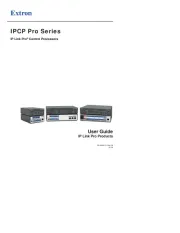
31 Juli 2025
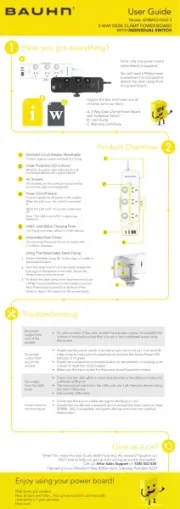
31 Juli 2025
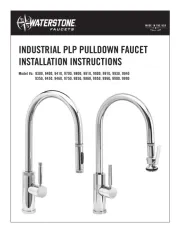
31 Juli 2025
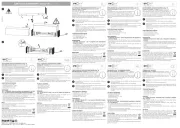
31 Juli 2025
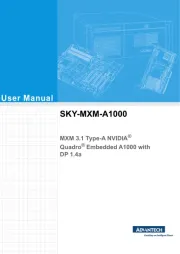
31 Juli 2025

31 Juli 2025
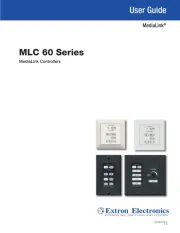
31 Juli 2025
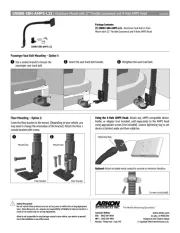
31 Juli 2025
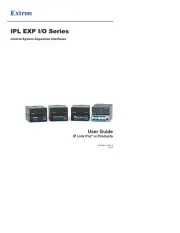
31 Juli 2025
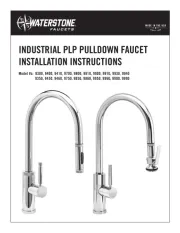
31 Juli 2025